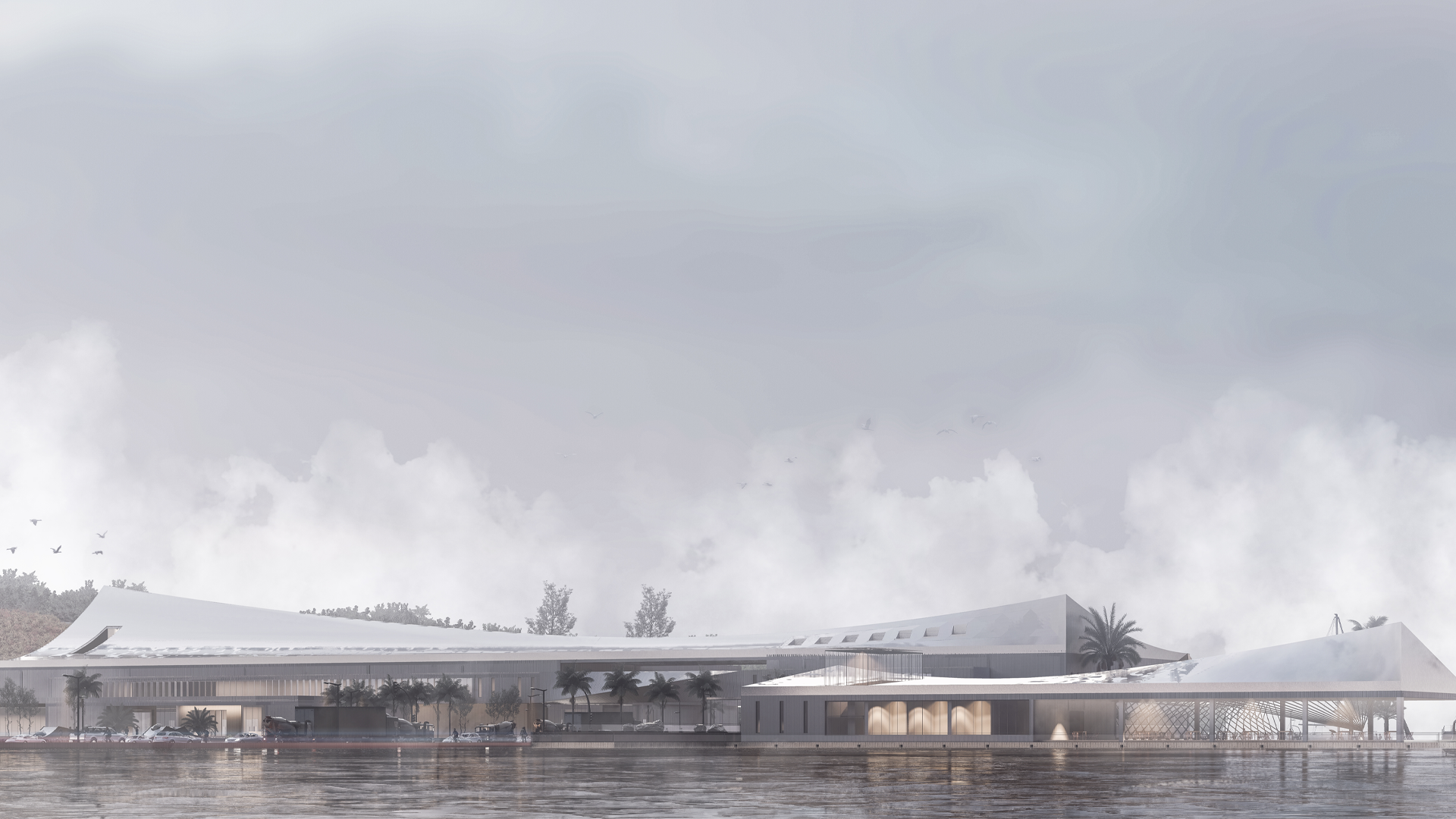
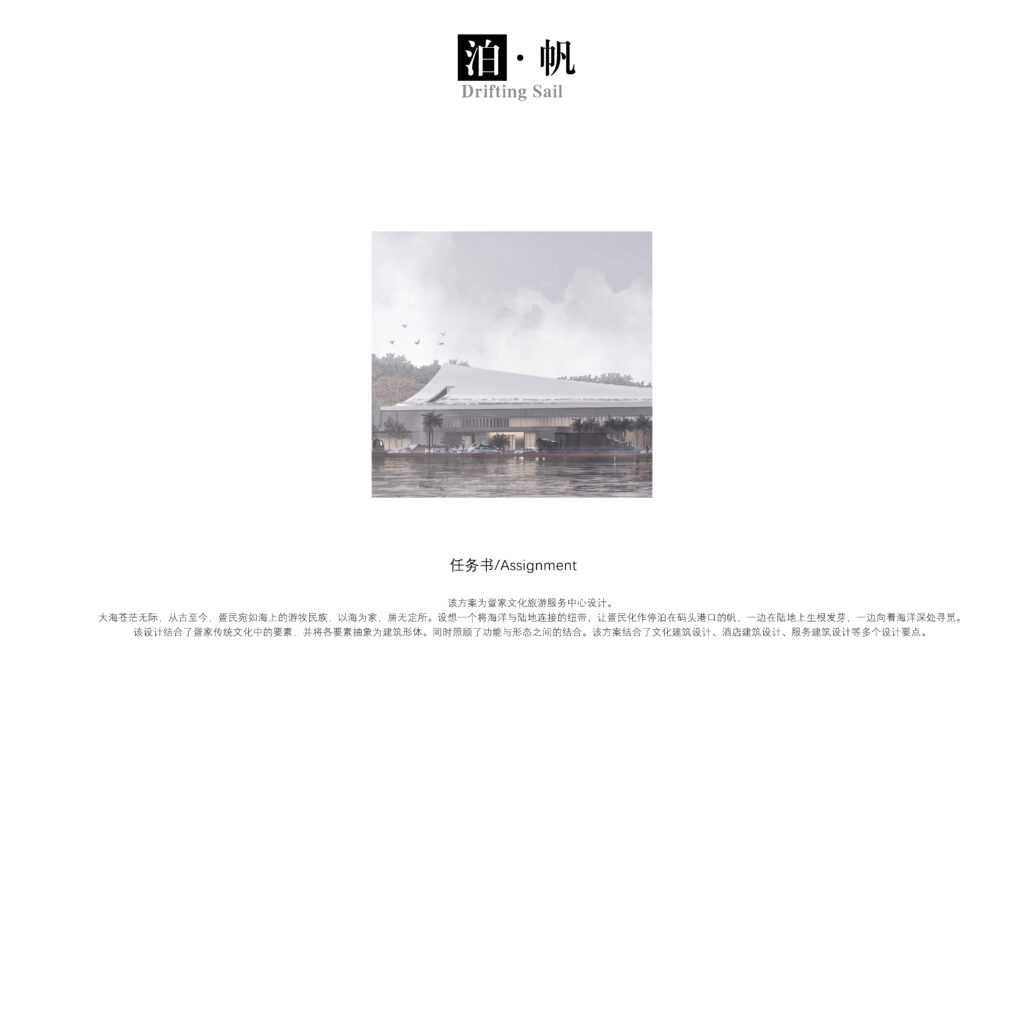
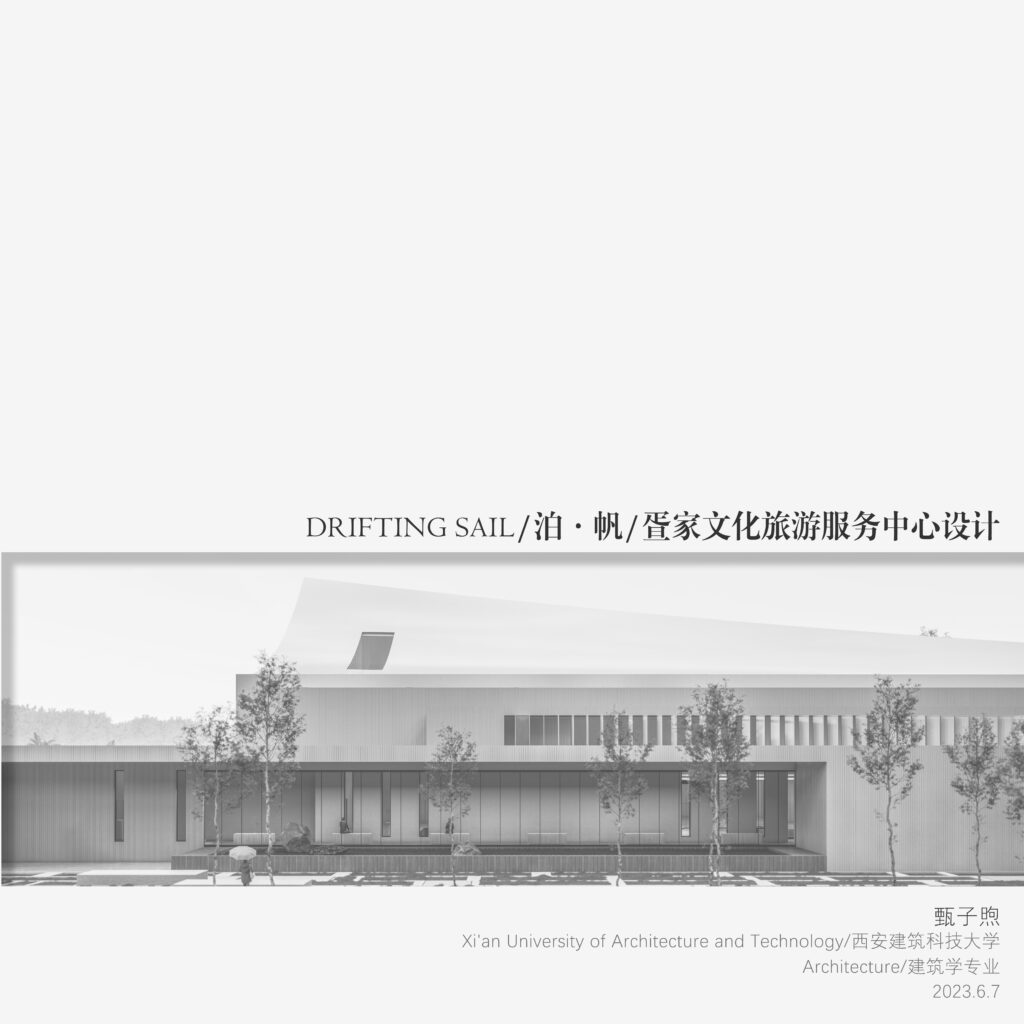
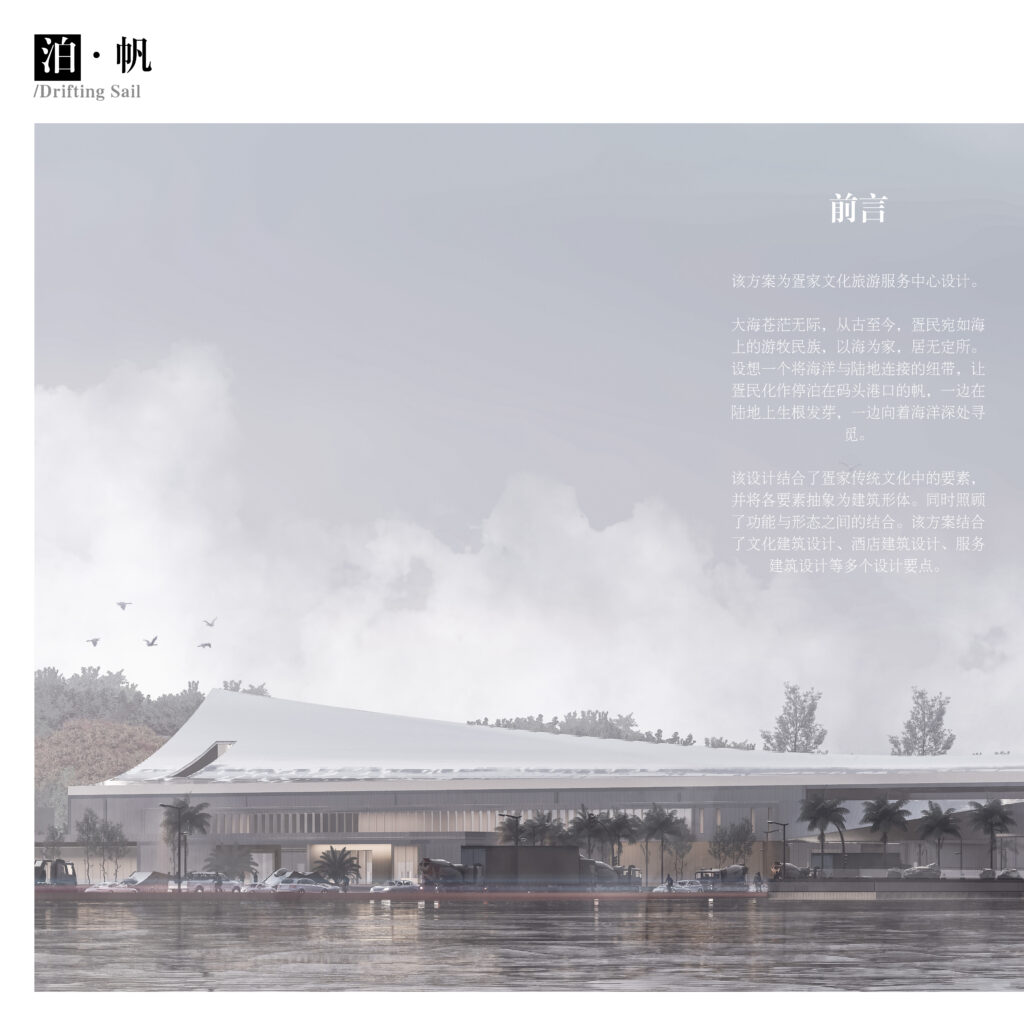
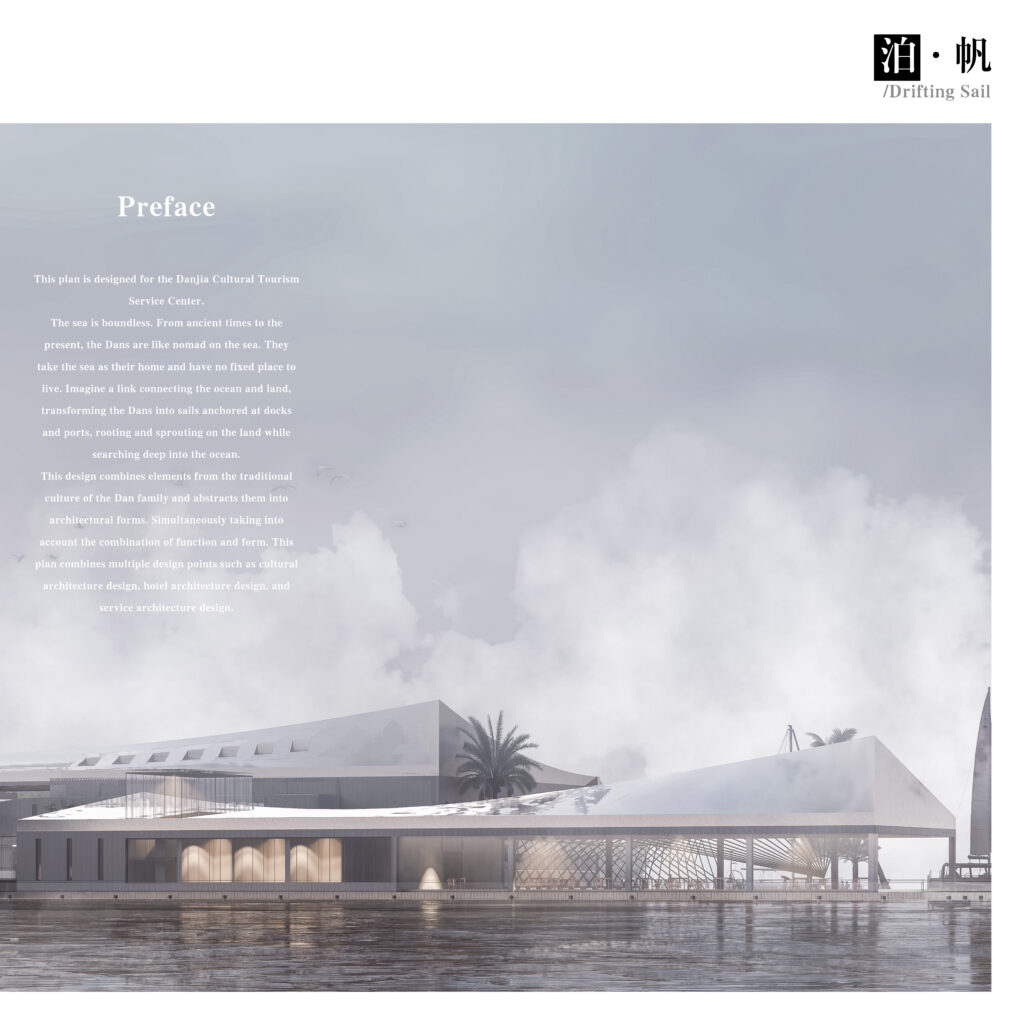

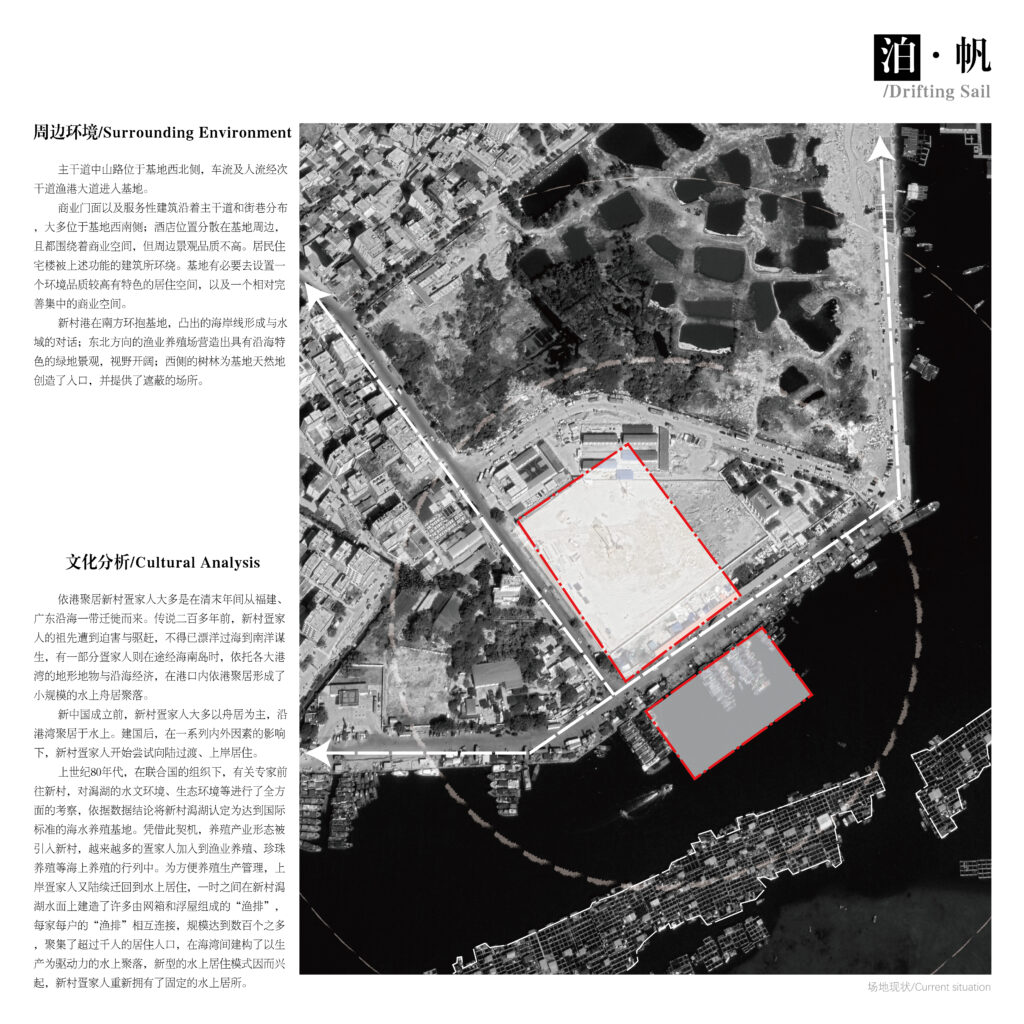
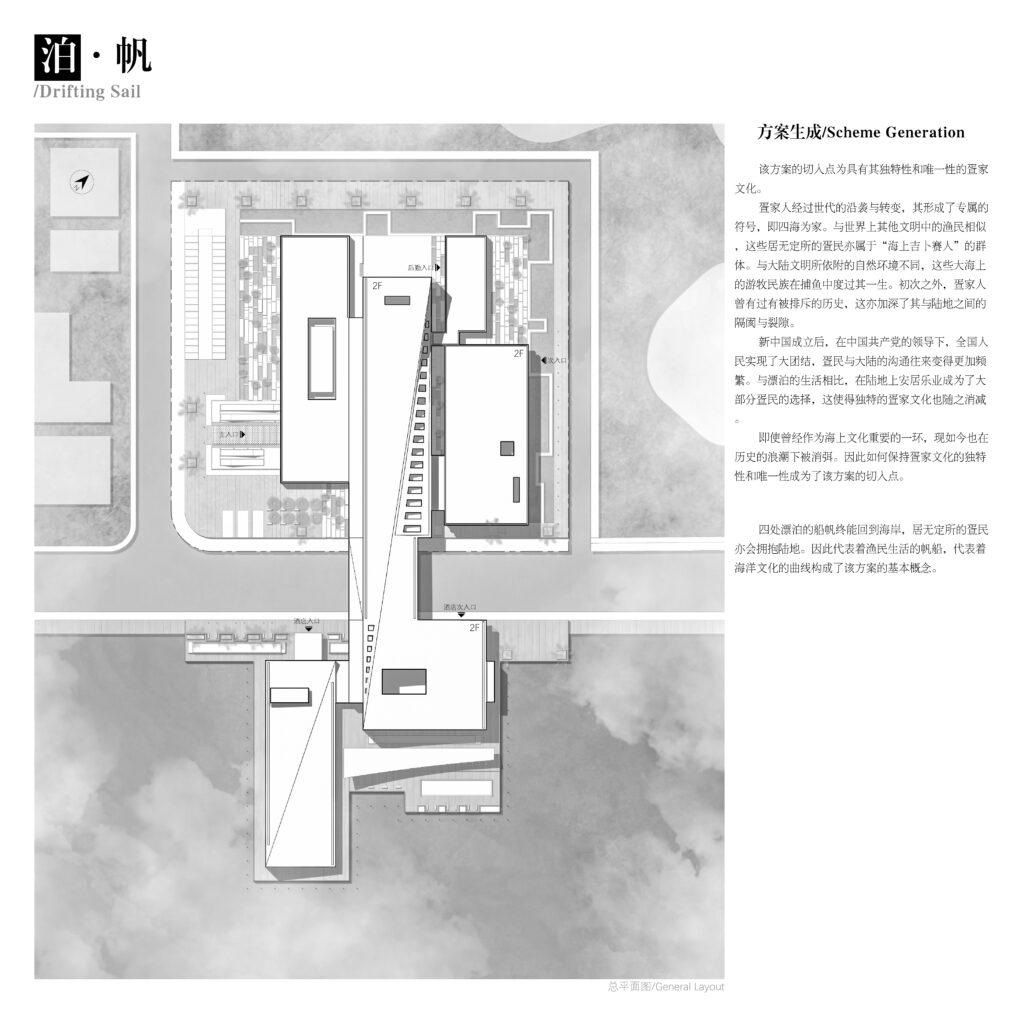
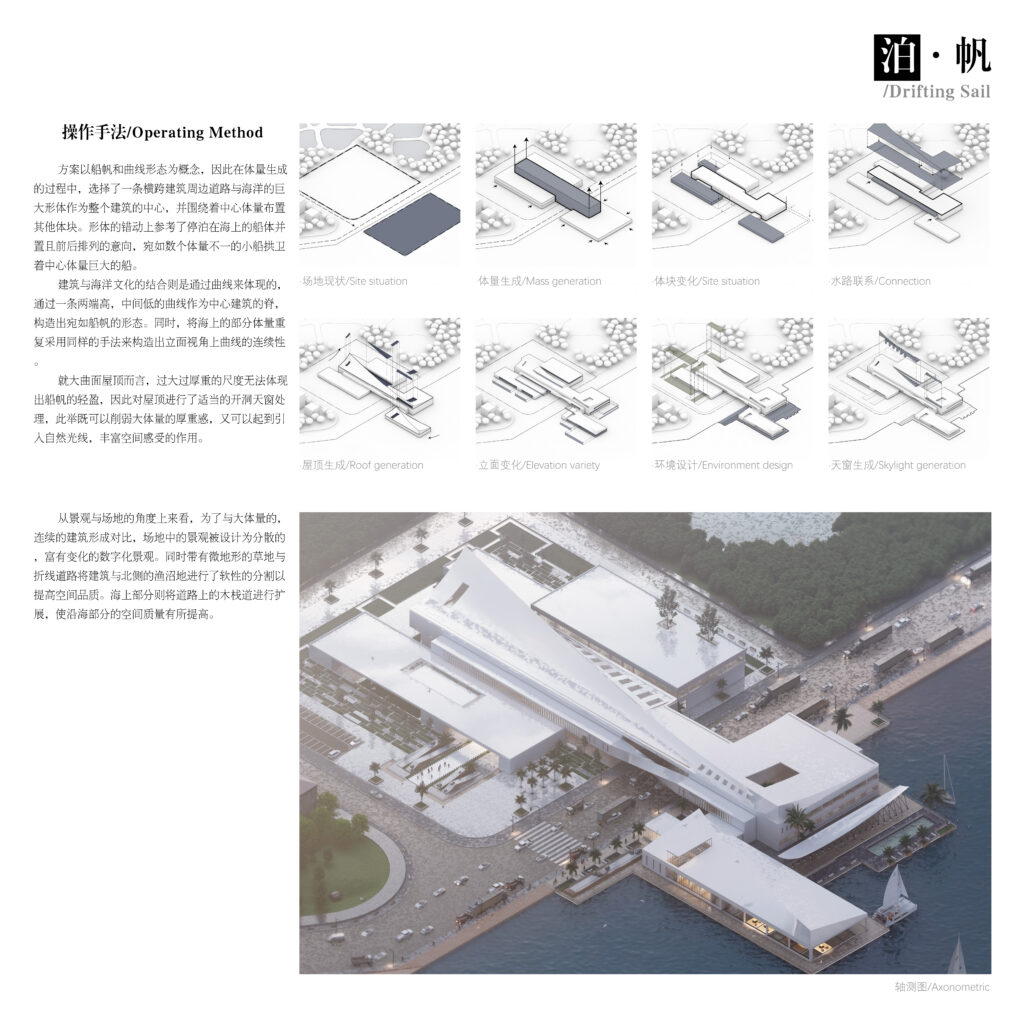
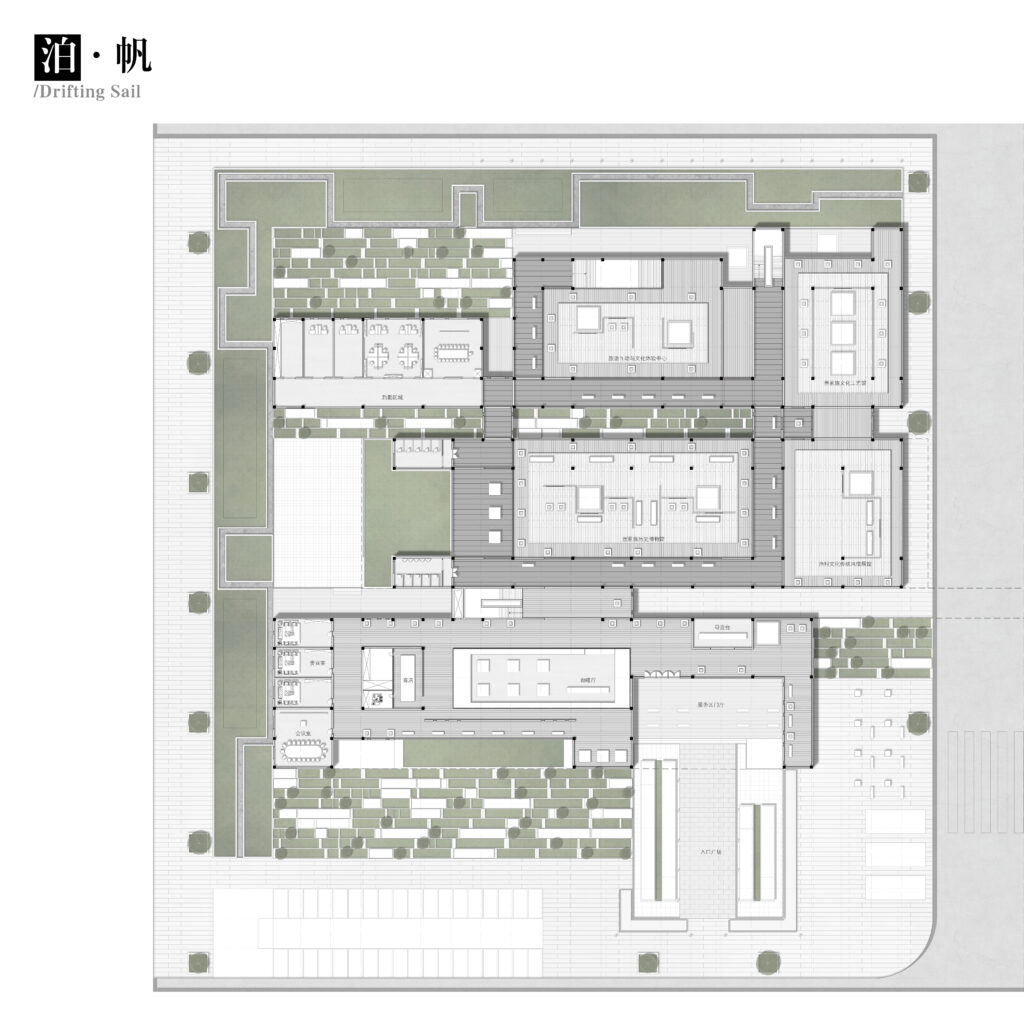
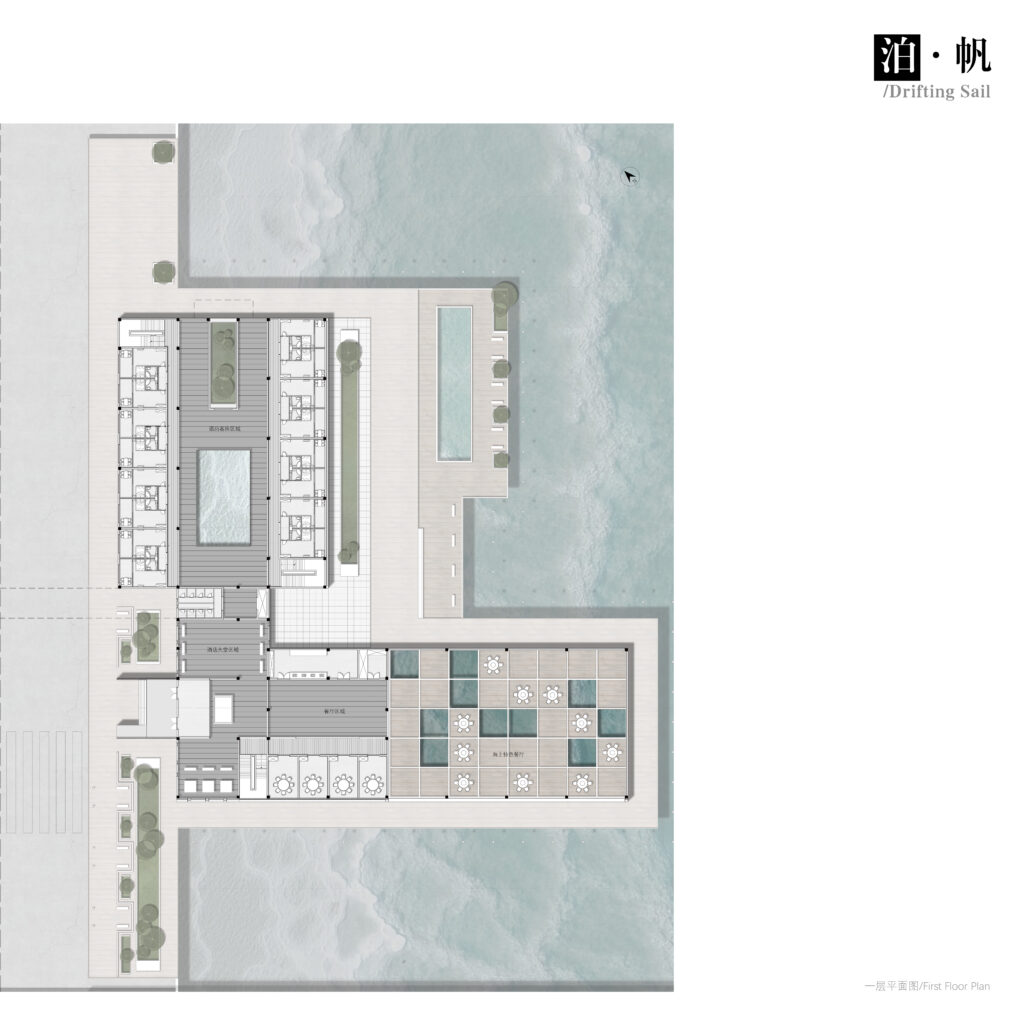
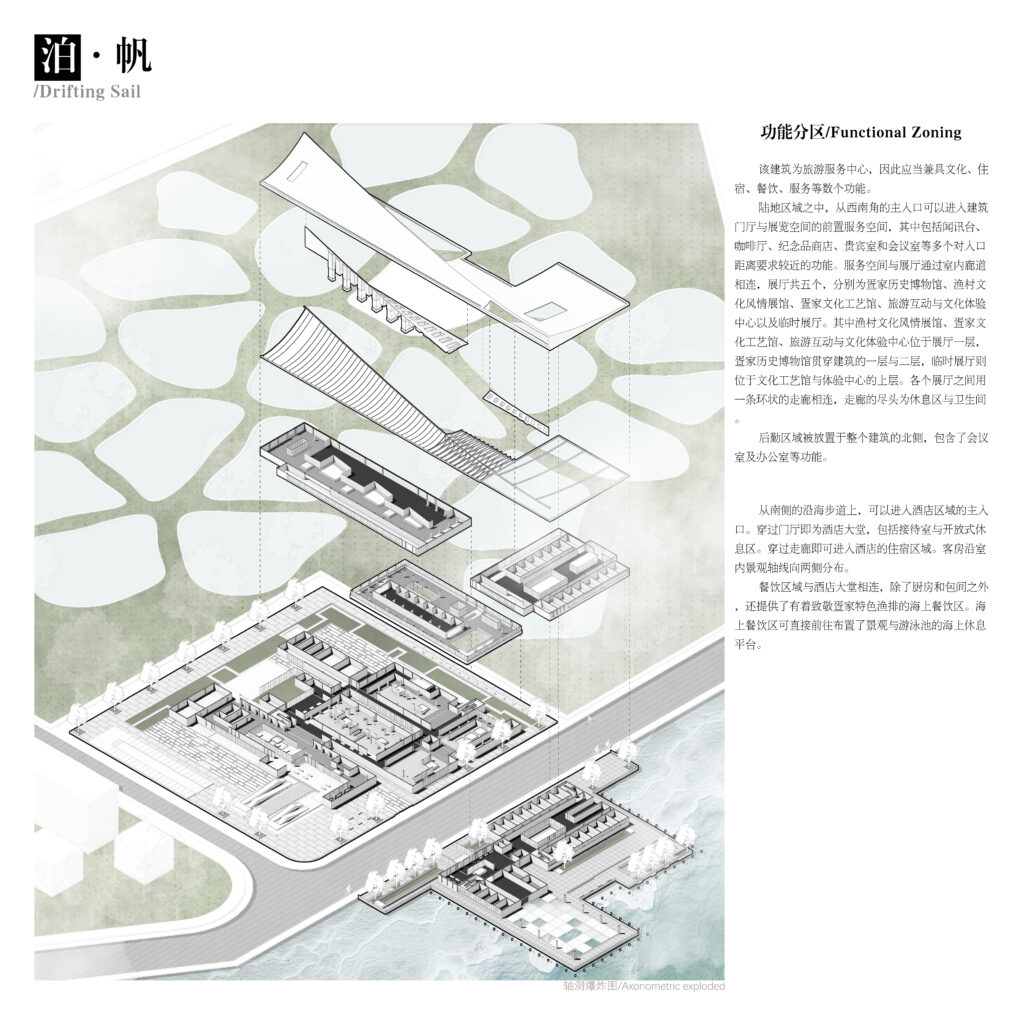
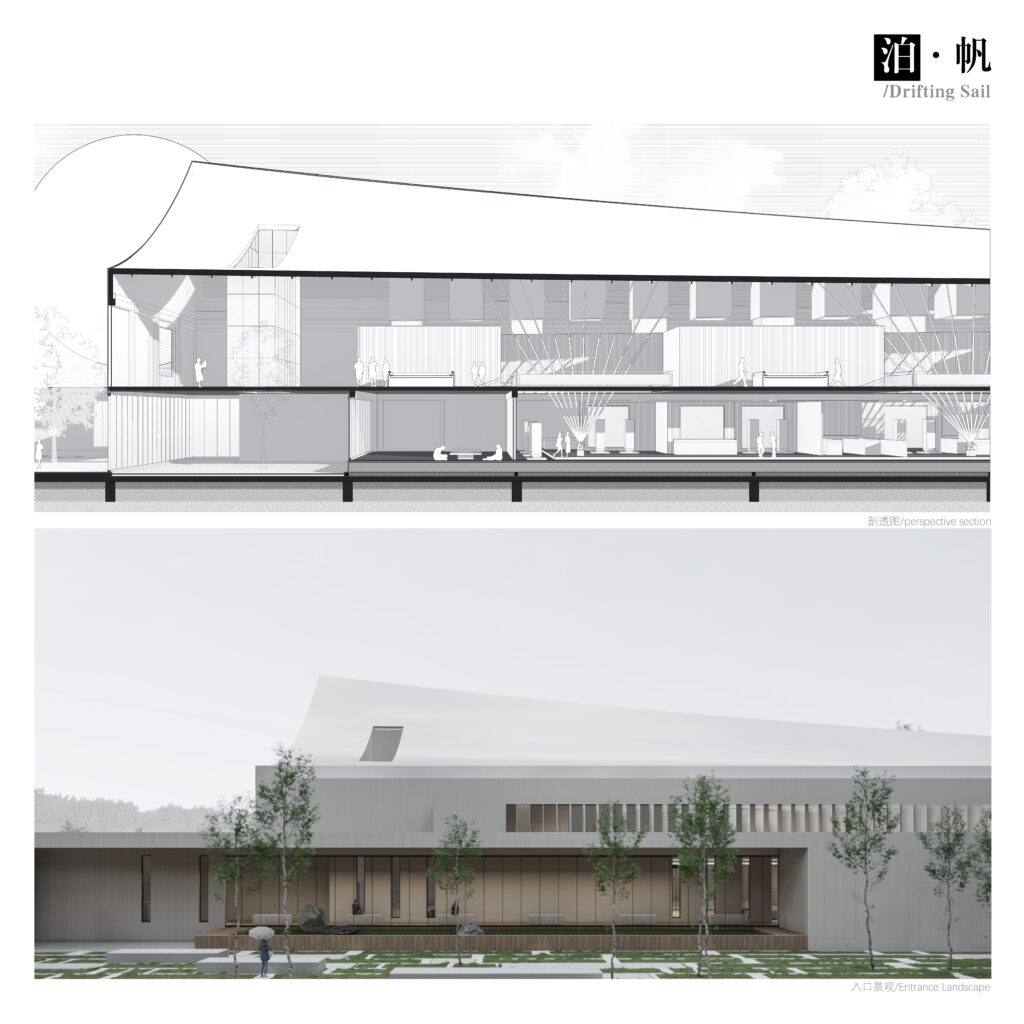
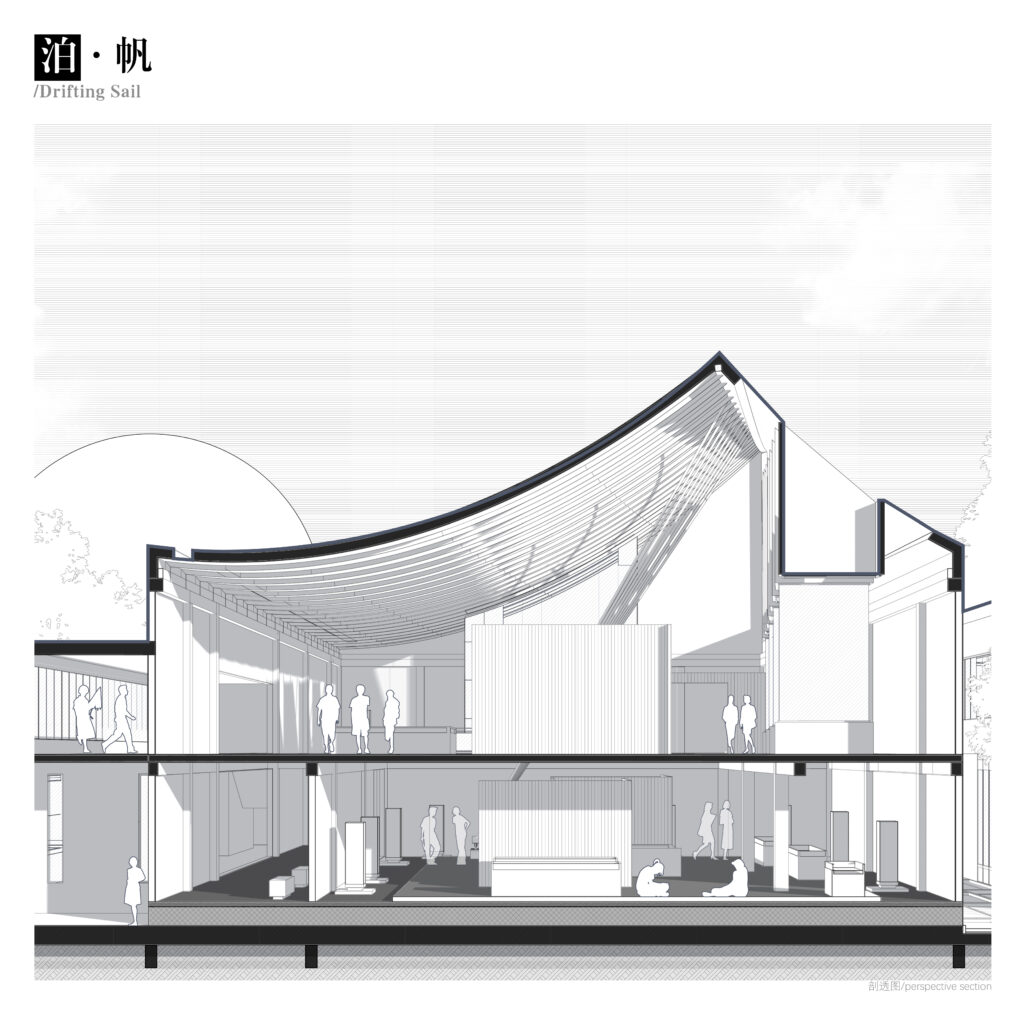
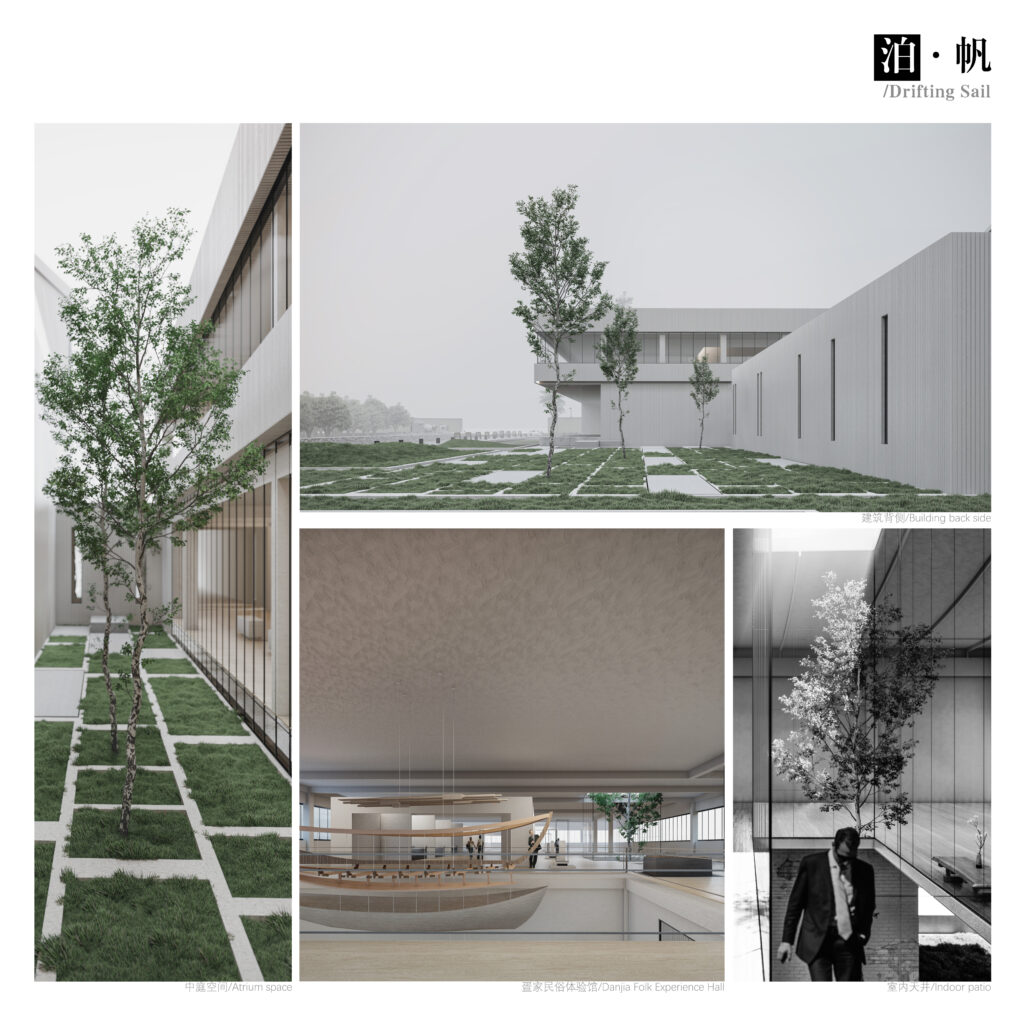
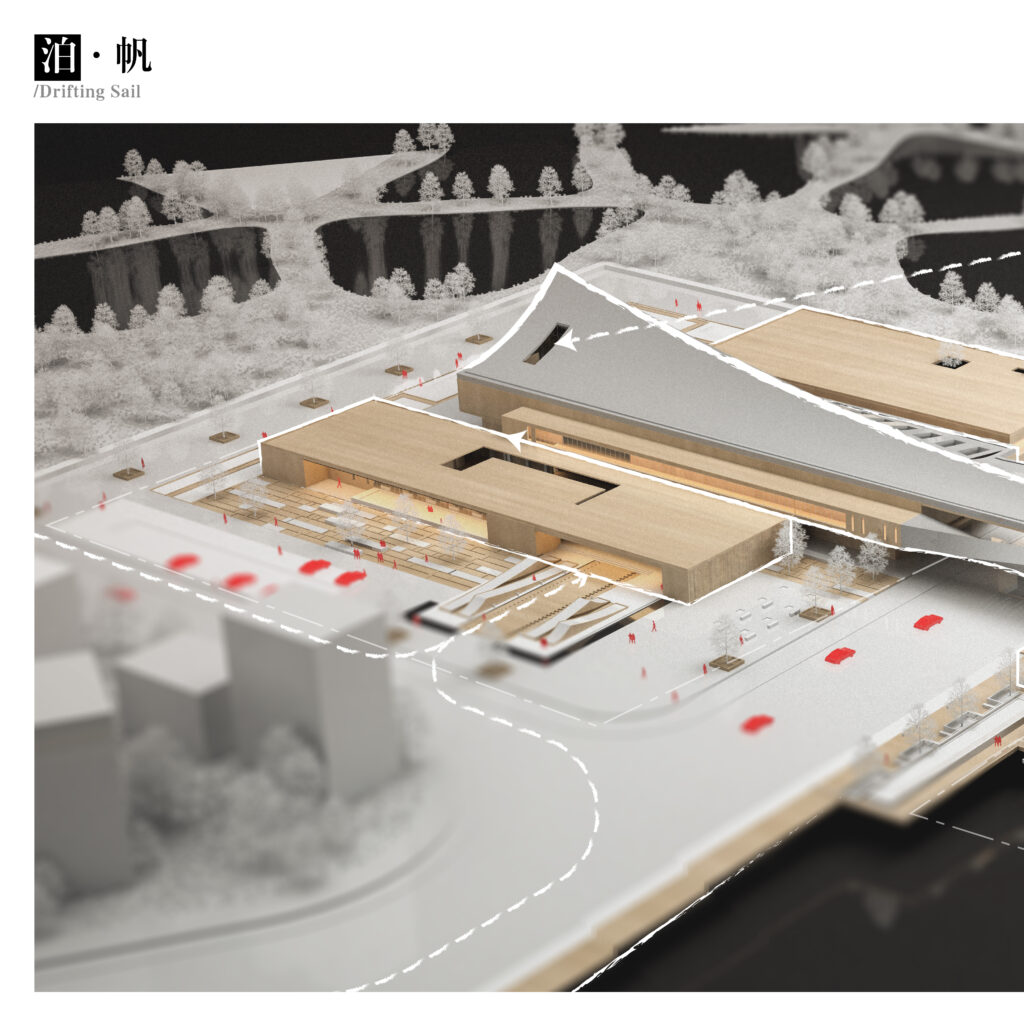
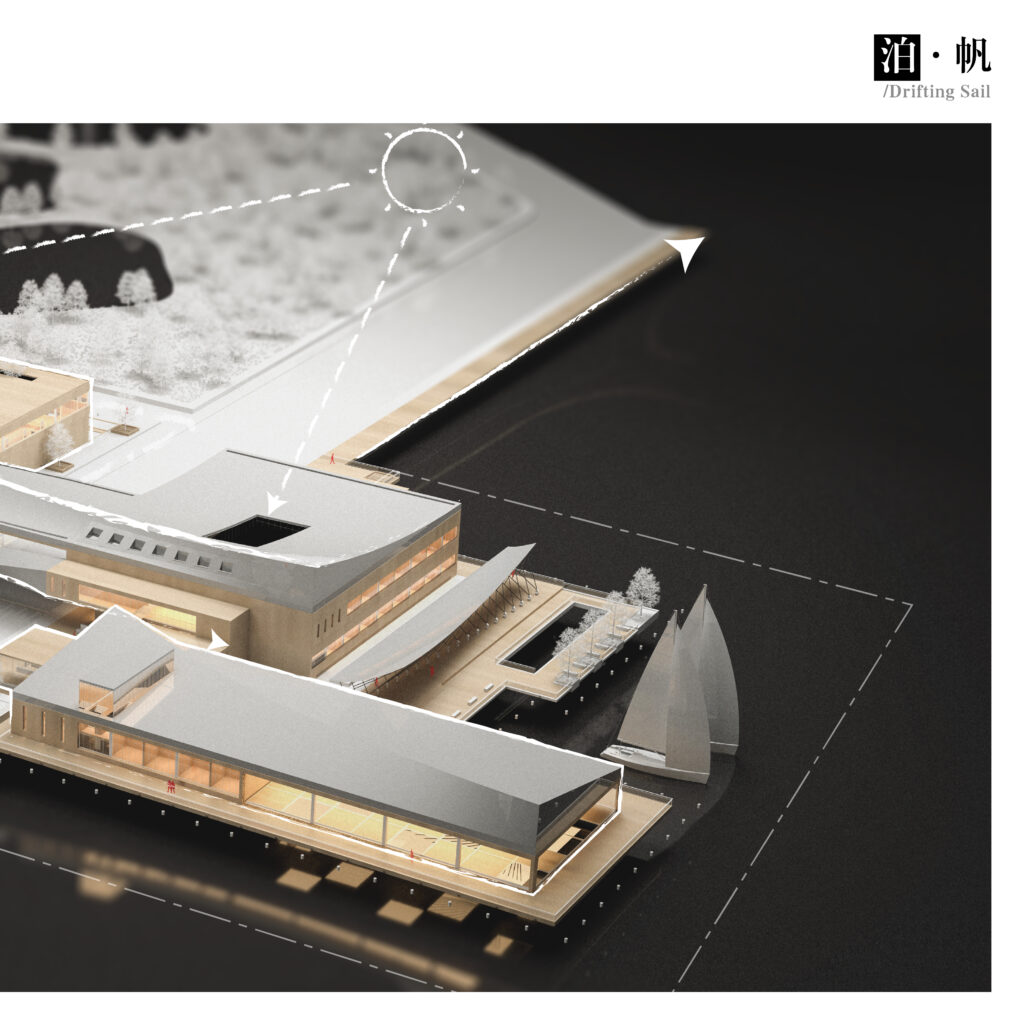
泊·帆/DRIFTING SAIL
该方案为疍家文化旅游服务中心设计。 大海苍茫无际,从古至今,疍民宛如海上的游牧民族,以海为家,居无定所。设想一个将海洋与陆地连接的纽带,让疍民化作停泊在码头港口的帆,一边在陆地上生根发芽,一边向着海洋深处寻觅。 该设计结合了疍家传统文化中的要素,并将各要素抽象为建筑形体。同时照顾了功能与形态之间的结合。该方案结合了文化建筑设计、酒店建筑设计、服务建筑设计等多个设计要点。
This plan is designed for the Danjia Cultural Tourism Service Center. The sea is boundless. From ancient times to the present, the Dans are like nomad on the sea. They take the sea as their home and have no fixed place to live. Imagine a link connecting the ocean and land, transforming the Dans into sails anchored at docks and ports, rooting and sprouting on the land while searching deep into the ocean. This design combines elements from the traditional culture of the Dan family and abstracts them into architectural forms. Simultaneously taking into account the combination of function and form. This plan combines multiple design points such as cultural architecture design, hotel architecture design, and service architecture design.The survey area is mainly located in the Xicang-Sajinqiao area. The biggest characteristic of this area is the spontaneous stalls, shops, and dense crowds interwoven into the urban phenomenon of people coming and going – a phenomenon between orderly and disorderly. In addition, the types of stalls are also diverse. In addition to Xicang’s iconic flower, bird, fish, and insect market, there are also folk snacks appearing on the streets of Sajinqiao, and large-scale vegetable markets near the Jiaochang Gate. The presence of vendors and businesses in these cities constitutes a certain spirit of Xicang. Guided by this spirit, we have defined the scope of our research through daily observation.
